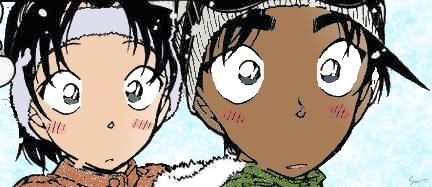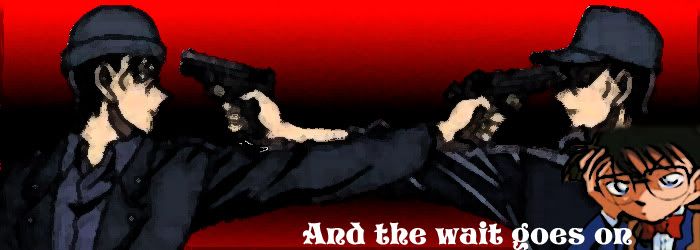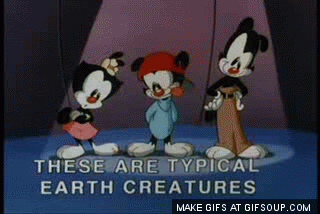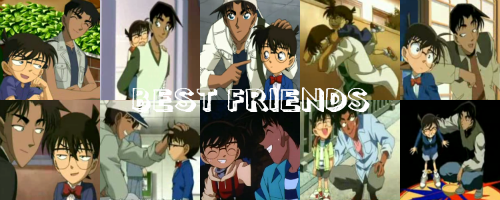I just going to say say this.
If an illegal vote was casted it should be removed.
I do not deny For a second That Of all the Conan Movies make Wizard should be on top.
But as I am not an official critic, I am going to quote one:
The Last Magician of the Century
Grade:
Overall (dub) : B
Overall (sub) : B
Story : B+
Animation : B
Art : C+
Music : B-
+ Involving, fully-plotted, lots of twists.
− Unimpressive artistry.
Review:
As the third movie based on the long-running TV series, The Last Magician of the Century debuted in April of 1999 during the original series' sixth season in Japan. Amongst long-time fans, it distinguishes itself by both incorporating both the recently-introduced character Vi Graythorn (Haibari Ai) and an antagonist who first appeared back during Season 3. It also features one of the closest points that Rachel ever gets to figuring out that Conan is actually Jimmy.
Movies based on long-running series play typically like bloated individual episodes, featuring better graphics but little of lasting storytelling merit. In this case, however, escaping the strict time constraints of episodic TV format helps the production immensely, allowing a broader and more complicated story to be told. That The Last Magician of the Century does quite well. Its 99 minutes allow for the story to briefly explain its basic premise and character backgrounds and then engage in a plot with multiple twists and turns, one in which the initial business with the Phantom Thief Kid proves to only be a set-up for the broader story about the mysteries involved with the Fabergé Egg. So much goes on, in fact, that the story never sags or seems to be stretching and allows its characters to show off without seeming like it exists entirely to let its characters show off.
Nor is this brainless kids' fare. Oh, sure, it still has its obligatory corps of kid characters, the obligatory goofy scientist, and violence muted enough to be tolerable to older single-digit-aged children, and sure, it still has the physically youthful Conan pulling many of the best stunts in the starring role. It does not make the rest of the cast lackwits just to make Conan look smarter by comparison, however. In fact, other cast members actually contribute worthy deductions of their own from time to time. The movie also gradually and systematically expands the scope of its initial basic plot by throwing in additional curves and complications at regular intervals, giving older audiences something to try to puzzle out; half of the fun of watching a mystery is trying to figure out what is really going on before the characters do, after all, and there are so many layers in this one that a viewer's brain will have to work overtime just to keep up with the story, much less get ahead. To keep it accessible to kids, the movie, like all of the TV series content, does make it glaringly obvious when some important clue comes up, but what the clues ultimately mean is typically not so clear.
A few problems do crop up along the way which cannot be explained off merely as conveniences to allow the premise of the show to work. Once the full truth finally comes together towards the end, the Phantom Thief Kid seems a little too omniscient; if the truth concerning the Memory Egg was that obscure, how did he know about it? And how does he pull off one of the disguises he does when the body style is totally different? The latter complaint can also be lodged against the assassin Scorpion in his shadowy depictions. (On that note, there are some big hints early on as to who the Scorpion might be, but kudos to the viewer who can make the connection that quickly or even recognize them as hints at the time.) One of the pivotal plot points involving Russian history has also been contravened by recent evidence, but given the movie's original release date, that cannot be held against the series. Mostly, though, these are relatively minor quibbles.
The TV series had adequate artistry for the time of its creation but was never a shining example of artistic quality, and the movie version does not substantially improve upon that. The production values are essentially the same; the animation may be a little better, as the action scenes are uncommonly fully-animated by TV series standards and the animation in general does not take as many shortcuts as long-running TV series normally do, but the artistry does not look any sharper or richer. No sign of CG effects pop up, either, but this is not content that would benefit much from them anyway. The creation of the Fabergé Egg design is perhaps the movie's most ambitious artistic achievement, as it extrapolates a complex original design (presumably) from existing ones.
The musical score and opening and ending songs are sufficient to support the events on screen but not especially noteworthy. The same can be said of the English dub performances compared to the originals, although the English performances do at least make an effort to give Russian characters Russian accents. The dub script retains the Americanized versions of character names used in the TV series, while the subtitles give the original Japanese character names, so there should be little reason for purists to complain as long as they ignore the dub. The English script also has to dodge completely around the Japanese script in a few other places, such as a riddle heavily dependent on Japanese wordplay being replaced with a classic English riddle. In general, though, and beyond the names, the English version does not make big changes unless it has to.
Funimation's release of the movie is as bare-bones as their releases ever come. Expect nothing beyond company trailers; unlike most Funimation releases, it does not even feature bonus interior artwork.
Not familiar with the franchise? Doesn't matter. This solid, surprisingly involving mystery movie is easily accessible even to a complete Case Closed/Detective Conan neophyte and allows viewers to enjoy the series at its best without having to wade through endless tracks of episodes.
-----------------------------------------------------------------------------------------------------------------------------------------------------------------------------------------------------------------------------------
The Phantom of Baker Street
Grade:
Overall (dub) : D
Overall (sub) : C-
Story : C-
Animation : C
Art : C+
Music : C-
+ Departs from the standard formula with a picturesque historic location and a unique "double mystery."
− Stumbles over its own grand ambitions with an unwieldy beginning, an awkward middle, and inconsistent production values. Oh, and enjoy the ugly text overlays.
Review:
With our pint-sized hero being named after Arthur Conan Doyle, the creator of Sherlock Holmes himself, it was only a matter of time before their worlds collided. This 2002 movie makes it happen by working a virtual-reality device into the plot—a far-fetched technology that is just barely believable, if you try not to think too hard about the obvious scientific loopholes. Then again, in a world where a high school student occupies the body of a grade-schooler, and his girlfriend still hasn't figured it out after all these years, scientific rigor obviously isn't the point. It's about action-packed sleuthing, which this movie does decently at the end ... but fumbles through a painful beginning and poorly paced middle to get there.
It's not like the beginning is terrible on purpose. It's simply that the filmmakers took on a challenging double storyline—the virtual search for Jack the Ripper, plus a real-world mystery involving daddy Kudo—and the challenge turns out to be a bit too much. We get 40 minutes of prologue before the kids even enter the game, with characters, conversations, and incidents setting the stage for what is to come. Although some scenes are essential, a lot of time is also wasted on Conan and friends making small talk (and lame jokes) with others, along with a heavy-handed subplot about Japan's regimented, prestige-based culture and the need for radical social change. All in all, this introduction takes up over a third of the movie—and they expect young audiences to sit through this?
Things get better once the virtual London scenario kicks in, but even that portion has its flaws. The British scenery and homages to Doyle's work are a welcome change from the series' usual trappings, but the fact remains that it's all a simulation. One can almost hear the audible groans of disappointment every time the movie cuts back out to the real world. It also doesn't help that the pacing is all over the place: here's Conan and friends strolling a historic European city, here's a gunfight just for the hell of it, here's some conveniently placed clues, and—uh-oh, time's running out!—here's the events leading to the dramatic confrontation with Jack the Ripper! Ultimately, it feels like an awkwardly stretched-out episode instead of a feature film, and Holmes doesn't even show up to help. How do you do a Sherlock Holmes homage without the man himself? This is how, and it's not very good.
A dramatic, action-packed ending is this movie's one saving grace, especially with the Kudo father-and-son team solving their respective mysteries in that inimitable "One truth prevails" style. In a departure from formula, the culprits are already known in each case, but learning how and why they did it is thrilling nonetheless. Ironically, it's the one point where the London arc loses its luster while the real-world scenario shines: Mr. Kudo's deductive analysis of the game creator's murder is a gripping, masterful monologue, while Conan's showdown with Jack the Ripper culminates in a banal Hollywood-style fight aboard a moving train. There's still one unexpected mystery for Conan to solve at the very end, though, so wait for it.
Even the animation staff seems to have realized that the movie's first act is a flop; everything prior to the London scenario is a morass of stiff poses, dull colors, and recycled animation. If it's any consolation, at least the original characters created for the film stay true to the style of Gosho Aoyama's character designs. Still, the real-world portion of the story was clearly handled by the studio's second-stringers, with the all-star squad taking care of the action in England. Evocative colors, period costumes, and well-researched backgrounds make Conan's trip to the 19th century a visual delight, and things only get better once the action kicks in. If other scenes seem stiff and done on the cheap, it's because all the effort clearly went into the final act, where we finally get theatrical-quality animation and some impressive set pieces. Too bad that kind of polish couldn't have been applied everywhere else.
On the other hand, the music production in this film remains consistent ... consistently mediocre, that is. A number of critical scenes are inevitably ruined when some out-of-place lounge jazz or a mournful rock ballad cuts in to try to set the mood. Considering the time and place in which the story is set, modern pop seems like the last thing that ought to be on the soundtrack. Admittedly, some of the music is taken from the TV series for the sake of thematic consistency, but to just drop it in there without adapting to the needs of the setting and story is a sign of laziness.
Viewers with sensitive ears may also have to brace themselves for further assault with the English dub, which frequently borders on overacting. It seems that, with the storyline as far-fetched as it is, the cast has chosen to take a tongue-in-cheek dramatic approach, which weakens some of the film's more serious moments. Sticklers for translation would do best to stay with the subtitled version, of course, which also uses the characters' original Japanese names rather than their Anglicized form. But neither audio track can help prevent this disc's most embarrassing technical issue: the Japanese text used to introduce characters and locations are hard-coded into the video footage (i.e., it's "part of the artwork"), so there's no way to replace them except to slap an ugly gray rectangle on the footage and superimpose English text on top of it. Imagine the joy of trying to follow the subtitles when a big gray box stating "Important Secondary Character" suddenly pops up and collides with the text, making everything unreadable.
The very idea of The Phantom of Baker Street seems like it should have been a winner—the most popular detective anime of recent years crossing paths with the detective hero that started it all. But the idea falters in its execution, with the storywriters taking on too many subplots at once, wasting too much time in getting to the good part, and then finally making a mess of the good part once it's there (honestly, a Sherlock Holmes homage with hardly any Sherlock Holmes?). It also doesn't help that the production values are all over the place, with the animation staff only stepping up their game when fists are flying and trains are exploding. When the end credits finally roll, we get to see a montage of photo and video footage that was taken during on-location research in London. Shame that they couldn't have put that effort into the actual anime.



 - Get your Detective Conan bobbleheads today! -
- Get your Detective Conan bobbleheads today! - 





